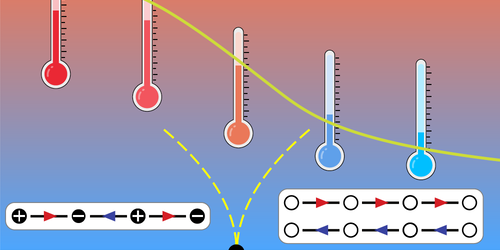Watching a Quantum System Thermalize
The forces of nature possess symmetries that physicists embody in so-called gauge theories. These theories have mathematical elegance, but they can be challenging to apply in systems whose constituents strongly interact. Performing calculations on a discrete lattice lightens the computational burden, but even that approach can be intractable. An alternative method is to simulate the system of interest with another more-tractable one whose quantum-mechanical description is the same. Now Han-Yi Wang of the University of Science and Technology of China (USTC) and his collaborators have done just that [1]. Using an optical lattice of 19 sites the team was able to mimic the behavior of massive particles in a rudimentary gauge theory. The experiments open a path toward more involved calculations.
The team’s optical lattice consisted of alternating deep and shallow wells, which could be occupied by ultracold atoms of rubidium-87. Tuning various parameters, the team was able to suppress single particle hopping and encourage particle pair hopping, resulting in interactions that matched those of massive particles as described by a one-dimensional lattice version of a gauge theory known as the Schwinger model.
Having set up their system, the researchers filled the lattice with ground-state atoms that had alternating up and down spins, a quantum critical state akin to antiferromagnetism. They then followed the system as it thermalized. Unlike their classical counterparts, closed quantum systems do not necessarily attain a state of maximum entropy after an arbitrarily long time. Forestalled thermalization appeared in the USTC experiment, as expected. However, it was correlated with the quantum critical state, which was unexpected. Wang says the finding could help elucidate how thermalization happens in a gauge theory.
Correction (1 August 2023): A previous version of the story stated that the Schwinger model is a lattice gauge theory. It is in fact a continuous gauge theory.
–Charles Day
Charles Day is a Senior Editor for Physics Magazine.
References
- H.-Y. Wang et al., “Interrelated thermalization and quantum criticality in a lattice gauge simulator,” Phys. Rev. Lett. 131, 050401 (2023).




